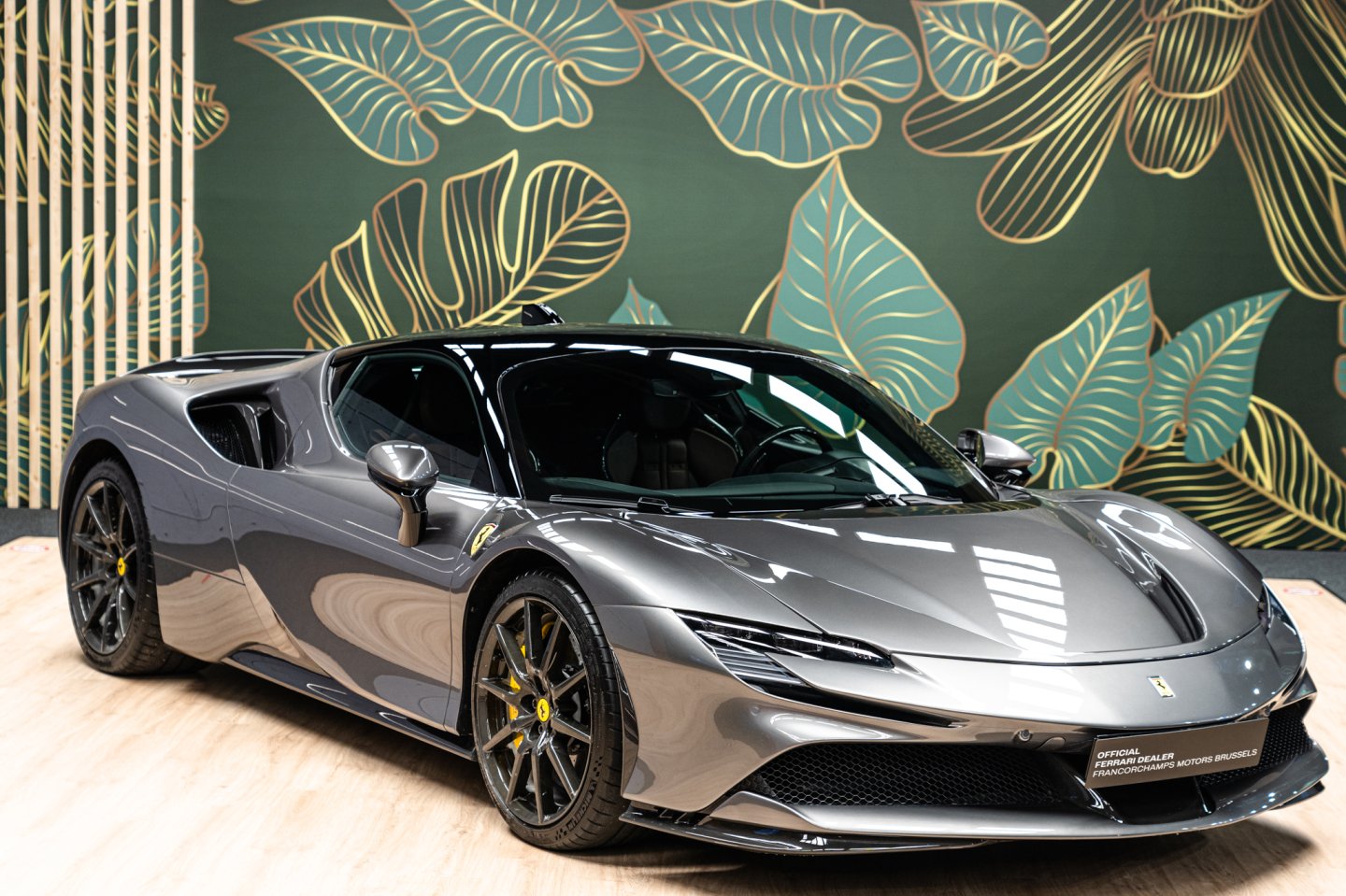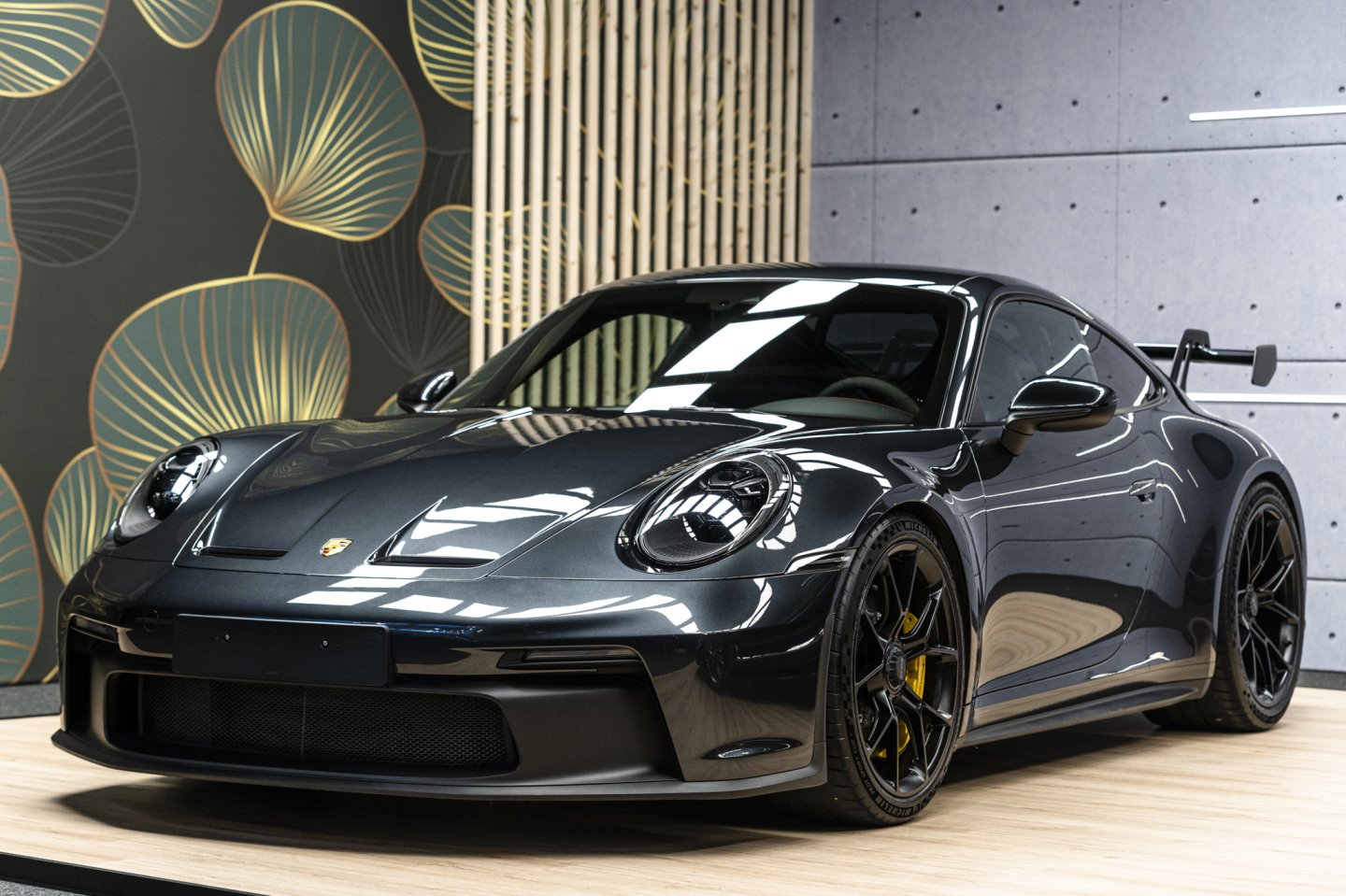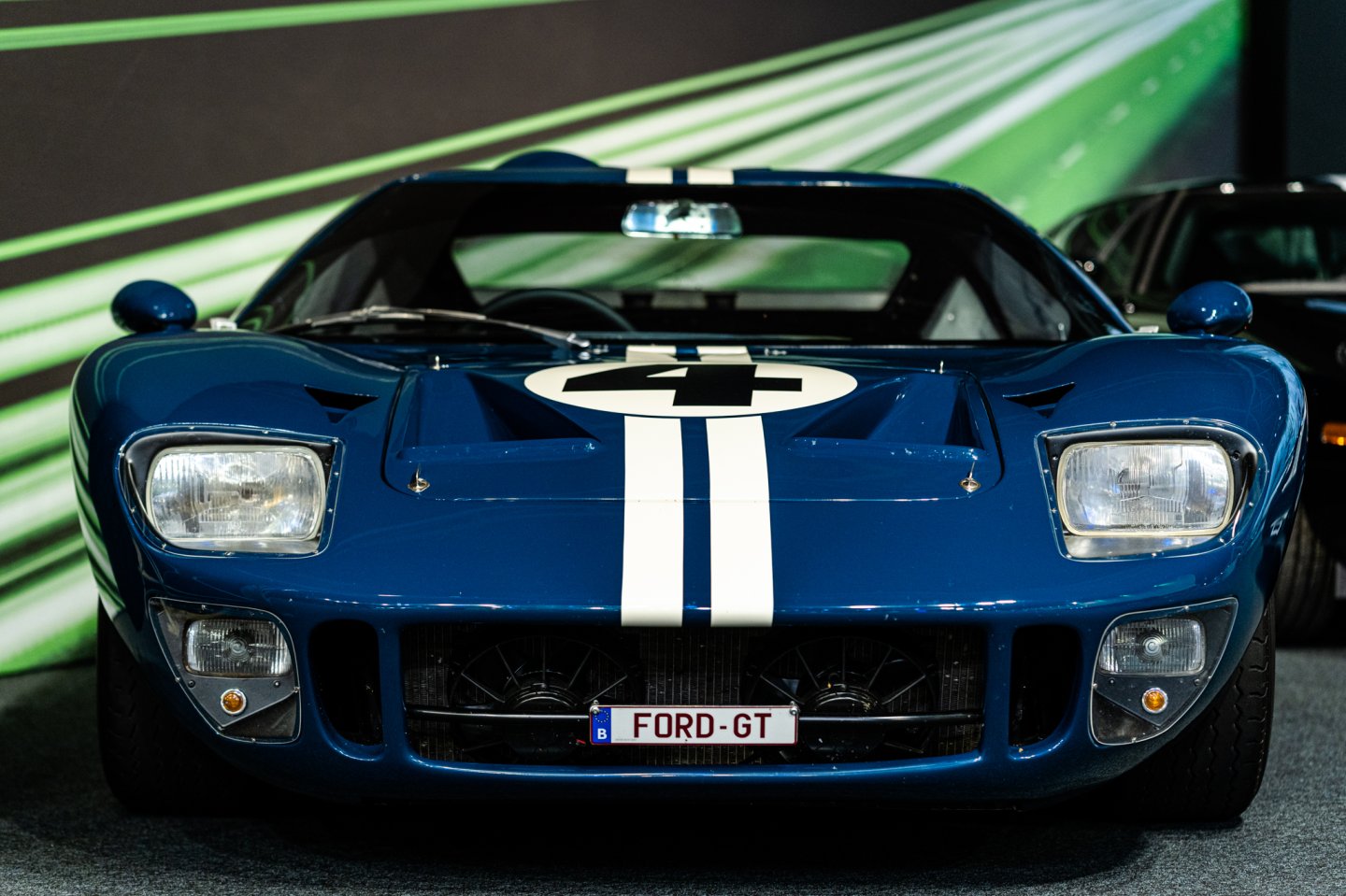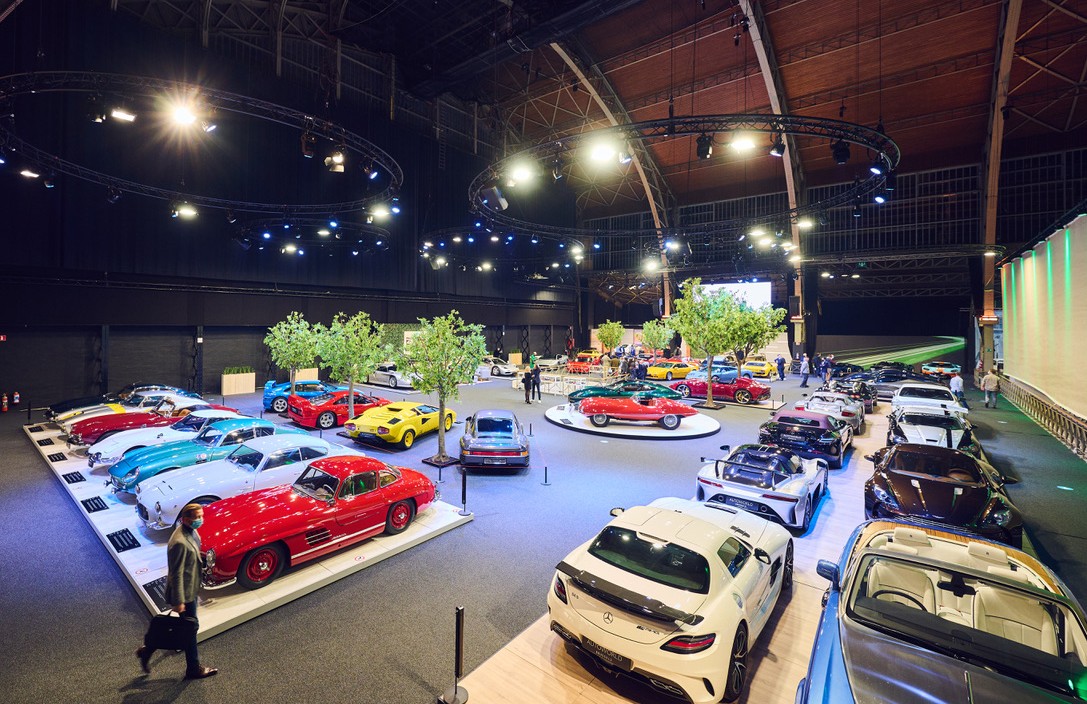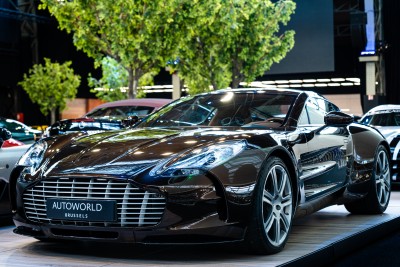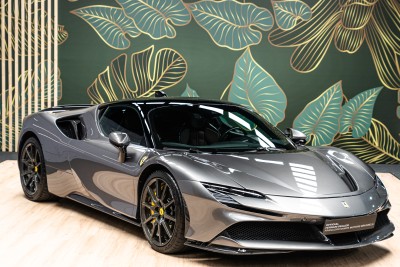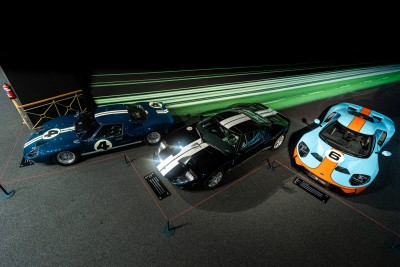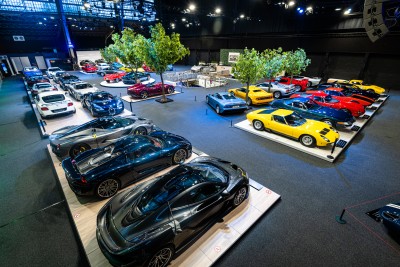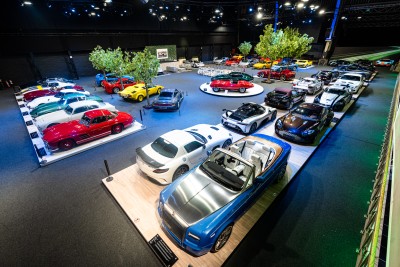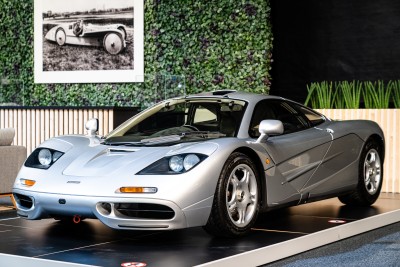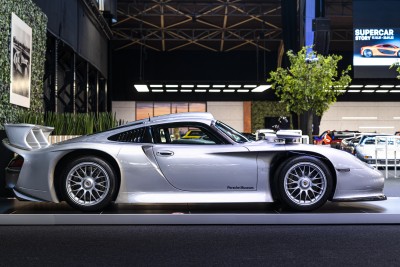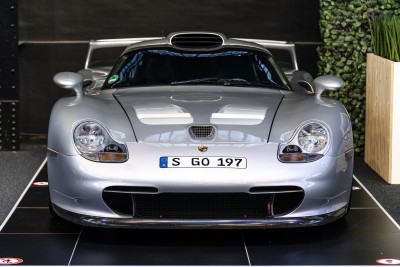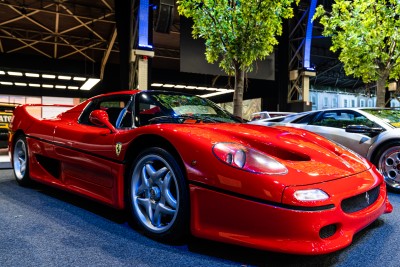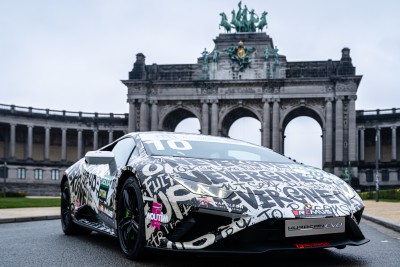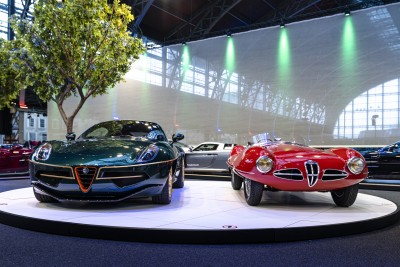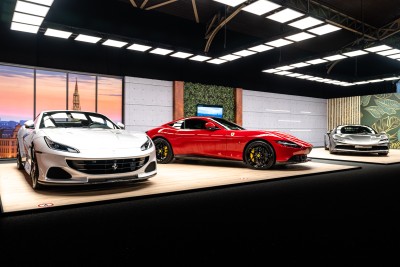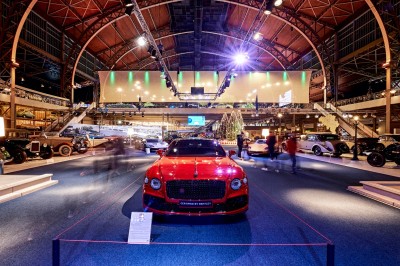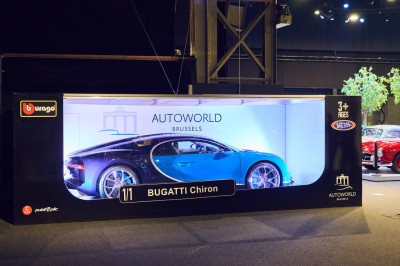IN EXCESS OF 40 EXCEPTIONAL CARS REACQUAINT WITH AUTOWORLD’S MAJOR END-OF-YEAR EXHIBITIONS
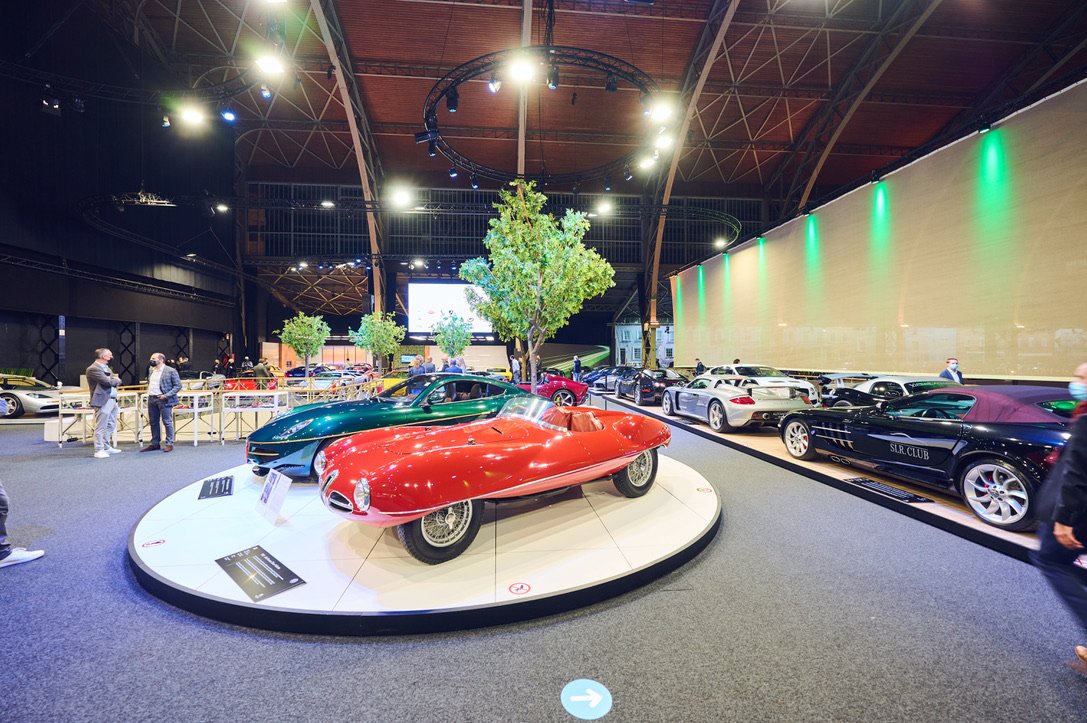
Coming up to the end of the year there will be more than just the city and Christmas tree lights that will be sparkling! Stars will definitely also shine brightly in the eyes of all automotive enthusiasts. In excess of forty exceptional cars will epitomise one of the greatest periods in automotive history. None other than the Supercars, brought together in a unique and scenarized area in the heart of one of Europe’s most important automotive museums Autoworld.
All the Supercars on display have left their mark in history ranging from the post-war years up to 2015. That is to say that none of these models can be acquired new via the makes that distribute them. The keen buyer will only find them via specialised auction houses or private collectors wishing to part with theirs.
For a major part the Supercars exhibited emanate from international museums or private collections. In fact some of these have never been exhibited.
All this makes this exhibition utterly unique!
This is Autoworld’s Christmas present to its visitors.
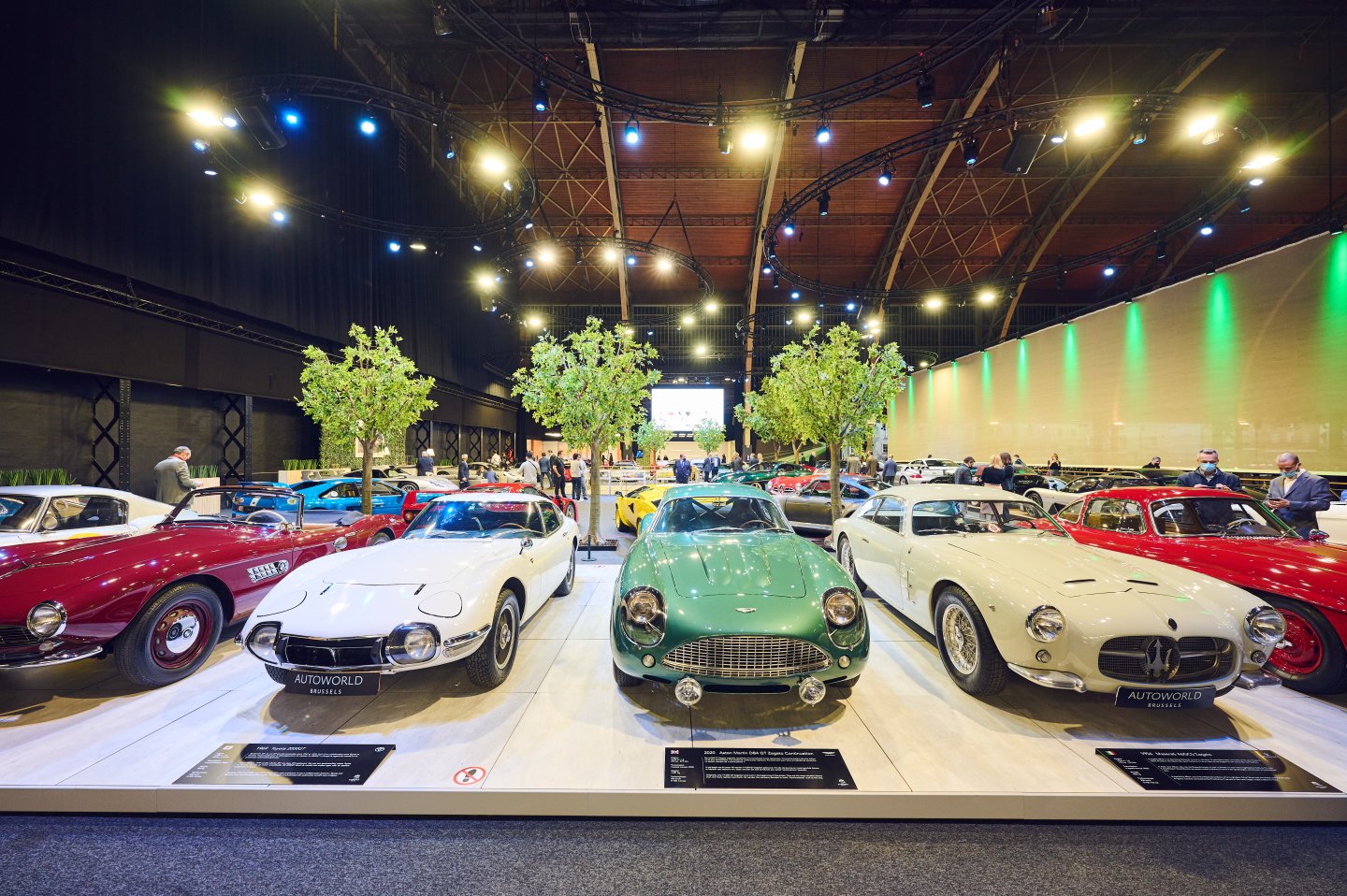
A SUPERCAR... WHAT IS IT ?
When it comes to answering that question, everyone has their own version. We can’t overlook the fact, over the years the cars have become ever faster, more powerful and extremer. Just, for instance, look at this stunning Lamborghini Miura, in the eyes of many the first modern supercar. When it was revealed in 1966 it astounded the world with its transverse V12 engine producing 345 bhp. Exactly 50 years later one of the most extreme of today’s cars was presented, the Bugatti Chiron. Under the bonnet breathes almost 1500 bhp – near on four times more…
An evolution that fully deserves to be placed under the spotlights: and a museum such as Autoworld offers the ideal décor for this. I love to compare the “Supercar Story” exhibition with that of the supreme musical hit parade, whereby thanks to their design, performance and timeless beauty the cars have either become legendary or will in the future. You can discover this hit parade yourselves in the following pages…
In the meantime, Autoworld, with its biennial themed exhibitions has developed a great tradition. These are increasingly successful and encourage us to raise the bar ever higher. This time around we are delighted to illuminate one of the most exciting pages out of automotive history in the form of more than 50 exotic supercars. This could well be one of the most exclusive exhibitions out of our existence. In any event we have never brought together so much horsepower in one single exhibition.
Special thanks to our loyal partners, the collectors and the museums that lent us their cars, the numerous volunteers and of course the Autoworld family and, as always, we would never have succeeded in our objective without them!

The evolution
While the term “Supercar” may have been used in the 1920s, it wasn’t until the mid-1950s that sports cars with outstanding performance really entered the marketplace. Early pioneers for the supercar segment included the 1954 Mercedes 300SL and the 1953 Chevrolet Corvette C1.
In the mid-1960s supercars as we think of them today began to release. Some significant developments in the 60s include the creation of the Ford GT, which came about because Ferrari refused to join Ford, and the release of the mid-engined Lamborghini Miura, which was designed from the start as a road car. The Ford GT became a staple of the supercar and American muscle car scene, proving performance and exquisite design can go hand-in-hand.
A fuel crisis in the early 70s almost ended the supercar, but they managed to survive and grow from here. The first mass-market turbo road cars, including the likes of the Porsche 911 Turbo, were released. The 911 Turbo stood out with its eccentric design elements and stellar performance. With the birth of the 911 Turbo, Porsche cemented themselves in the supercar scene, and have remained there to this day.
Arguably the most important supercar of this generation was the Lamborghini Countach. This mid-engine model had a striking design that stood out among the pack. It’s V12 engine was longitudinally-mounted with slight modifications to the Miura’s engine placement. The end result had the engine sandwiched between the rear differential and mid-mounted transmission. The Countach remains a favorite among supercar fanatics and gearheads around the world, and rightfully so.
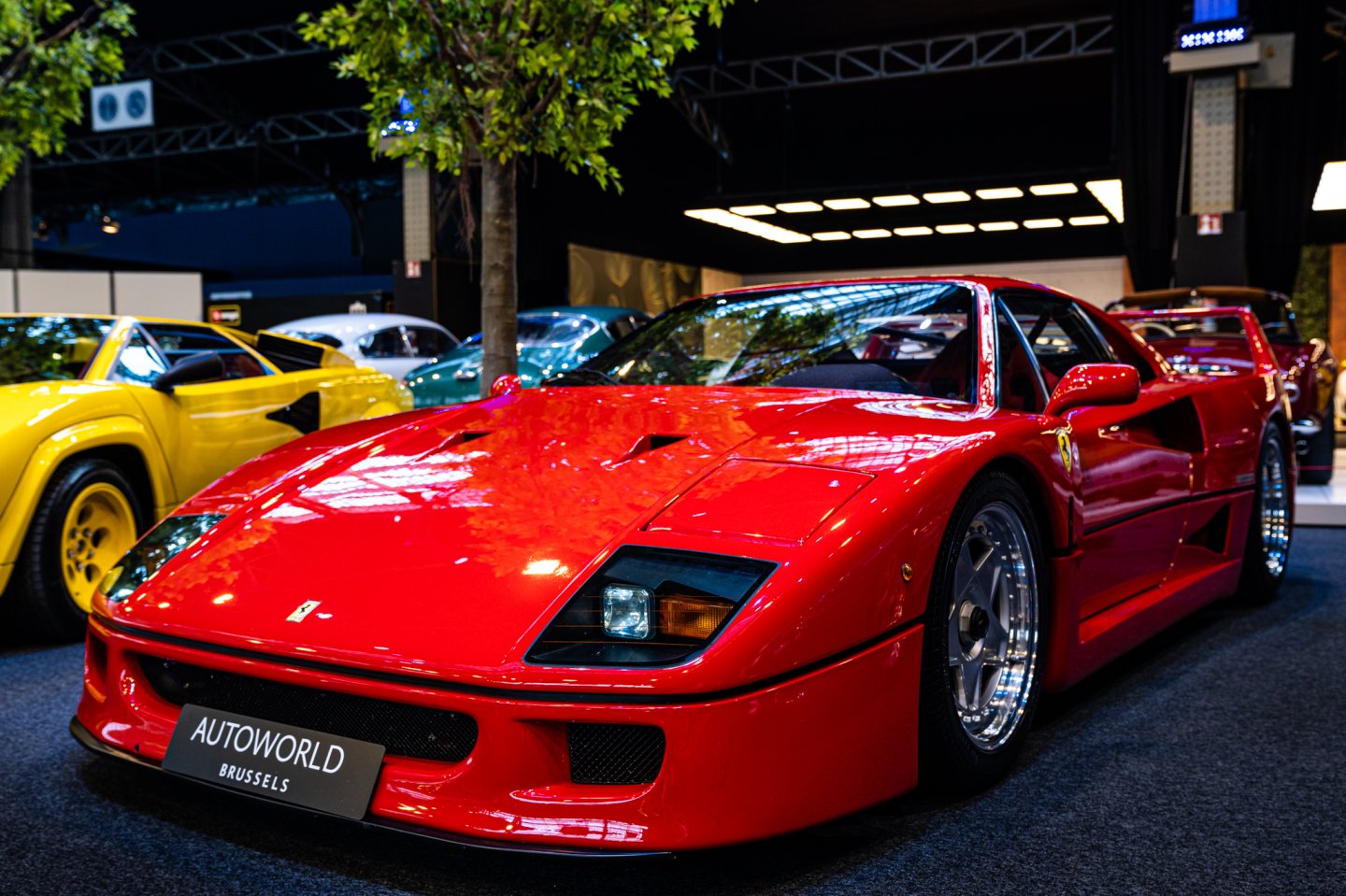
During this time Nürburgring also garnered worldwide attention thanks to the iconic RUF CTR “Yellowbird”, the legendary rivalry between Porsche and Ferrari heated up, and, the first 200 mph car, the Ferrari F40 road racer also hit the streets. Porsche unleashed the Porsche 959 here, and it sparked a heated rivalry between the F40 and 959. Both of these models made a huge impact, and paved the way for supercars of the next generation. Supercars for years to come would model after the legendary Ferrari F40, not just the Porsche 959, hinting on its sleek design, powerful corners, and aggressive front-end.
In the early ‘90s, the Honda NSX proved that a supercar could also be reliable and friendly for daily driving. The 1990s also saw the arrival of a slew of exciting and ground-breaking supercars. In the ‘90s among the stars of the wide range this included cars such as the Ferrari F50, Porsche GT1, McLaren F1, Jaguar XJ220, Lotus Esprit V8, Mercedes-Benz CLK GTR and the Lamborghini Diablo.
Nowadays there is also talk of hypercars. Their development came about with the rebirth of the Bugatti make, with the legendary EB110. A project that ended prematurely but was later resuscitated by the Volkswagen Group. The ambitions were not to be underestimated. 2005 saw the arrival of the Veyron, the first super sportscar developing more than 1000 bhp. Ten years later the bar was raised even higher: the Chiron boasts 1500 bhp under the bonnet. In the meantime, and following on from the example set in F1, the first hybrid hypercars appeared. Porsche introduced the 918, followed by McLaren with the P1 and Ferrari with the Laferrari. Since it now appears that due to stricter norms the combustion engine is on its way out, we can ask ourselves the question whether this could also mean the end of the super and hypercars.
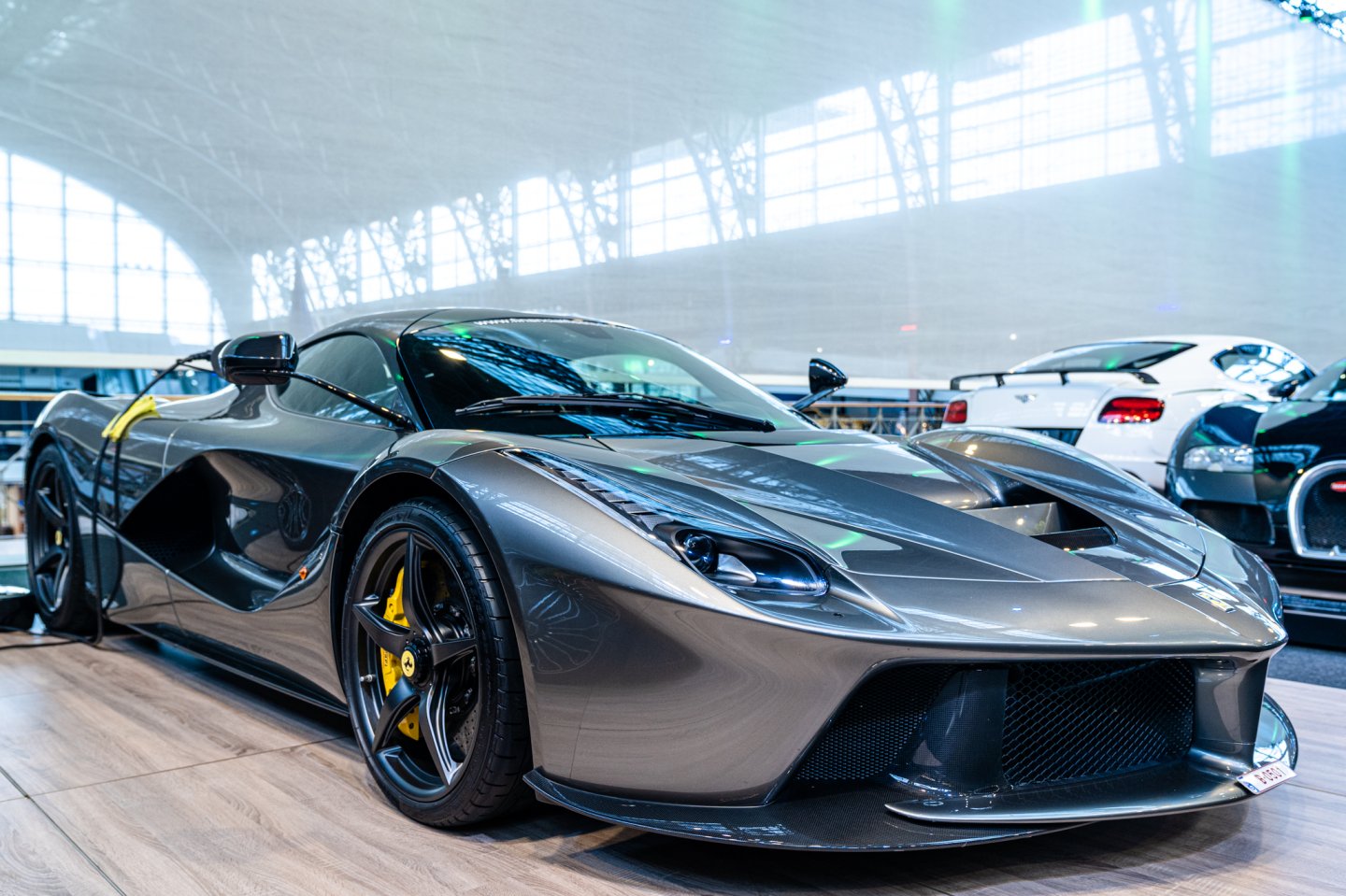
LES SUPERCARS EXHIBITED AT AUTOWORLD
Of the forty or so vehicles that will be exhibited at the end of the year, let us in the first instance mention those of the exhibition’s main partners, of which one will come across a few contemporary surprises in the spaces they will be allotted (see further down in this press release).
Lamborghini Miura
When Ferruccio Lamborghini started sailing under his own banner, he dreamed of comfortable GT machines that were so well thought out that one would want to drive them endlessly. As such not super sports cars. This until behind Ferruccio’s back the shrewd engineer Gianpaolo Dallara designed a revolutionary chassis with an awesome rear-engine V12. Following the revelation of this technical base at the Turin car show in ’65 the reactions were so wildly enthusiastic that Lamborghini was obliged to take on the project. One year later Bertone had prepared such a fine bodywork that the car was already a legend. It was the fastest sports car of its era and the first Lamborghini was named after a well-known breed of bulls.
LaFerrari
What started out with the F40 and then went on further via the F50 and the Enzo, finally culminated with the unreal LaFerrari, a car that from every fibre exudes what Ferrari truly represents and they christened it the somewhat toe curling name LaFerrari. Just as with the Porsche 918 and the McLaren P1 the LaFerrari calls on hybrid technology: here the V12 in combination with the electric motor develop 963 bhp. This car is a milestone in more than one aspect. To the regret of Pininfarina, the former purveyor to Royal Households, this is namely the first Ferrari entirely designed in-house. In true Ferrari tradition they always build one less than they believe they would be able to sell. In this case 499 units, that literally flew out of the door at one million euro each. Even stronger: only highly faithful clients could ‘receive’ one.
Porsche 959
At the time of its creation, the 959 was a revolutionary car, a marvel of concentrated technology powered by a small 450 hp twinturbo six-cylinder engine (less than three litres) with four valves per cylinder. It took a long time to develop, and was only delivered in 1987. It was then presented as a showcase of the brand’s superb know-how. It was not used competitively until the Paris- Dakar rally, where it met with success. The 959 served as the starting-point for the 4x4 versions of the 911.
McLaren P1
Together with Williams, Lotus and Cooper McLaren was one of the many ‘garage owners’, as Enzo Ferrari gladly stated, looking to denigrate the English race teams. More often than not these were amateur teams tinkering with racing cars in scruffy workshops as they struggled to reach the Formula 1 world. McLaren always stood out above the others thanks to Ron Dennis, the extremely cool CEO. His team having completely dominated Formula 1 in the ‘80s, he wanted to go one step further by building the ultimate sportscar for the open road. That became the F1 with a BMW V12, three seats and a central steering wheel, all developed by chief engineer Gordon Murray and designed by Peter Stevens. In the ‘90s it was by far the fastest that money – a huge amount of money –could buy. Yet the 107 buyers made the deal of their lives, because today such an F1 is worth several millions. Rowan – Mister Bean – Atkinson is one of the lucky ones.
Bugatti Veyron
In 2000, the Bugatti Veyron prototype, designed by Hartmut Warkuss and his team of designers, was unveiled at the Detroit, Geneva and Paris Motor Shows. It bears the name of one of the greatest pre-war pilots, who, along with Jean-Pierre Wimille, won the last Bugatti victory at the 24 Hours of Le Mans in 1939. After five years of development, the production of the Veyron kicks off in Molsheim in the brand new « Atelier », erected in close proximity to Saint Jean castle.
This sports car is the fastest road-use car in the world. Some eighty Veyron 16.4s, built in keeping with the spirit of the brand - art, form and technique - are produced each year at Bugatti’s original headquarters, where most of the owners come to pick up their cars in person... as in the days of Ettore.
In addition, the visitor will come across some thirty other models. Among these, obviously! a Mercedes 300SL Gullwing, an Aston Martin One77, a BMW M1, a Ford GT40, a Jaguar XJ220, a Lexus LFA, a Honda NSX, and many more.
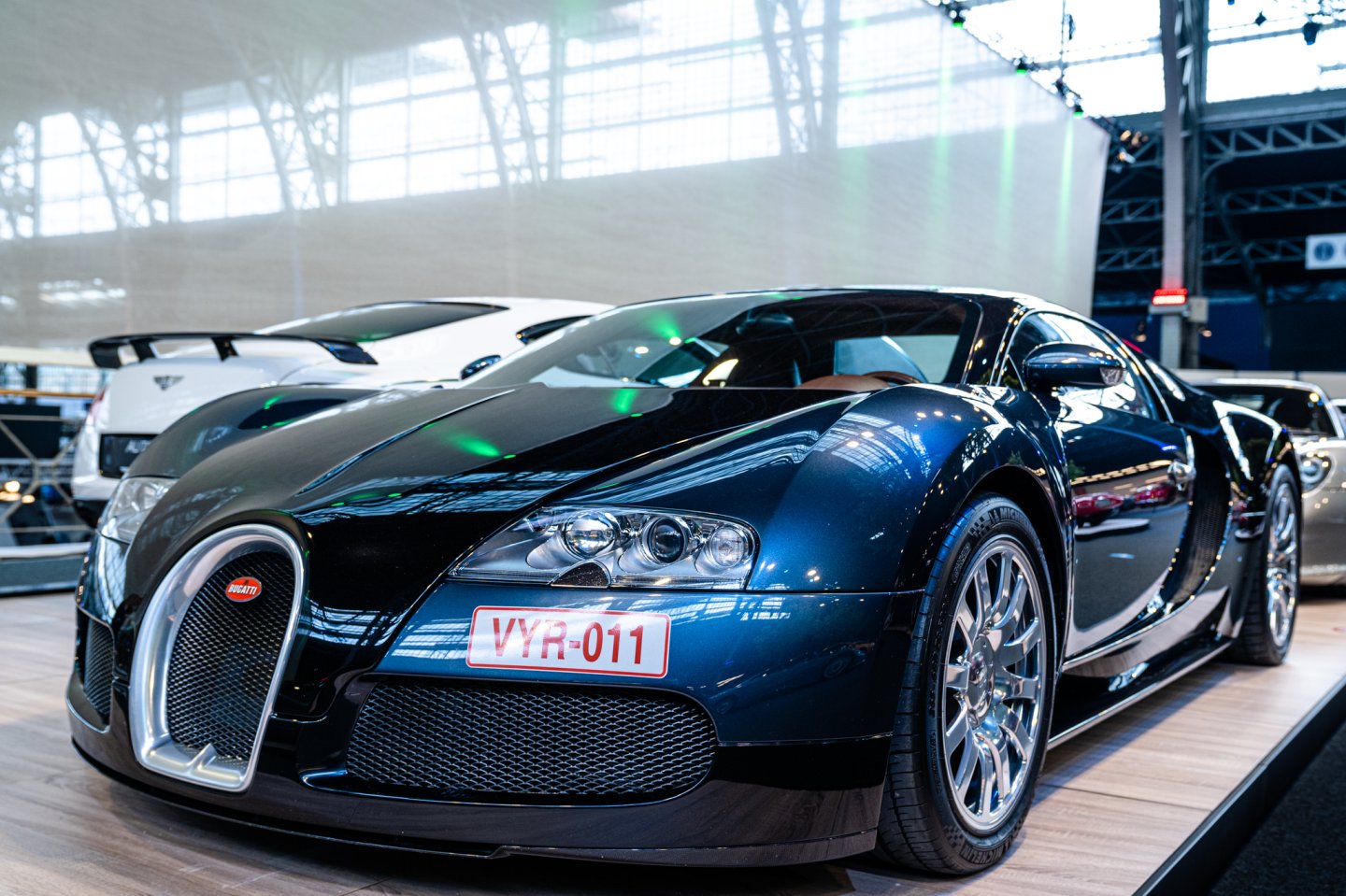
TWO OPEN "BLACK BOXES"
This exhibition is made possible thanks to the support of two main sponsors: the D’Ieteren company (Porsche, Bugatti, Lamborghini, Bentley) and the Ginion Group (Ferrari, McLaren, Rolls- Royce). Each of these will take up a place in a privatised space (a “Black box”), in which each will display its current Supercar models. The latter will vary over the month.
These spaces will be open and the public will then have the opportunity to come across and discover the current Super and Hypercars of the 7 makes represented.
